![]()
![]()
![]()
Use LEFT and RIGHT arrow keys to navigate between flashcards;
Use UP and DOWN arrow keys to flip the card;
H to show hint;
A reads text to speech;
73 Cards in this Set
- Front
- Back

|
Jan van Eyck: The Wedding of Arnolfini (1434)
No one point perspective Mirror Dog represents loyalty, companionship Dress color complements bed Shoes off because on holy ground Mirror -- > connection with Velazquez |
|
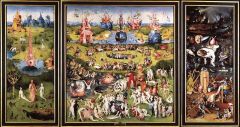
|
Hieronymus Bosch:
Triptych Glass all throughout Enlarged fruit and animals -- > sins of consumption, basal level triumphal procession of human pleasure panel on left is Garden of Eden, no sin, creating Eve Animals fighting over food --> foreshadow bunnies near women = fertility Hell shown with Bosch's portrait Gluttony of king in the underworld
|
|
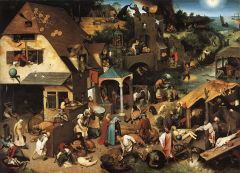
|
Pieter Bruegel:
Picks up on Bosch influence but uses moral lessons instead Discombobulated structure reflects the point of parables that are short and not narratives Praise of Folly. World depicted many times
|
|
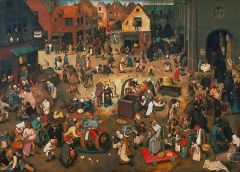
|
Pieter Bruegel:
Country coming to the City Antwerp depicted with people from everywhere Sense of Circle --> promenade Theatres of rhetoric depicted Center is possibly Breugel and wife turning back on religion |
|

|
Pieter Bruegel:
Hubris of Nimrod Allegory for Antwerp Architecture's connection to Rome --> Pope Leo's trying to resurrect Rome through St. Peter's |
|
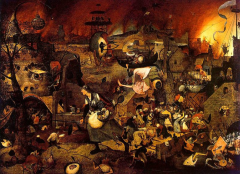
|
Pieter Bruegel:
Phillip II in 1557 cracking down on Reform Griet advancing towards Hell |
|
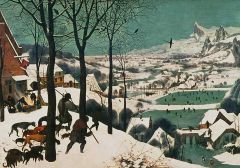
|
Pieter Bruegel: Hunters in the Snow (1565) pictaresque > leads eye down into the landscapes community and basic pleasure together |
|
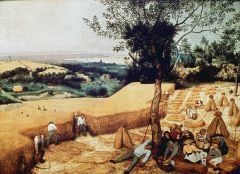
|
Pieter Bruegel: Realms of life present in the landscape with the church in the background and the workers in the front Perspective allows for workers expressions to be seen. Able to see individual stacks and meal being consumed |
|
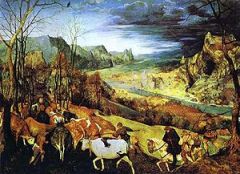
|
Pieter Bruegel: Return of the Herd (Autumn)(1565) Part of the series of different seasons Gallows always present --> image of death everywhere |
|
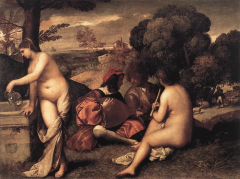
|
Giorgione or Titian:
Arcadia in Italy Joys of the out of doors Arcadia in the North is more good and work ethics, out of door to communicate with nature through work Engagement with the land --> releasse from the work, makes us whole |
|
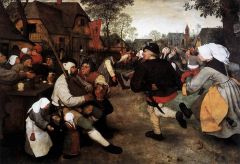
|
Pieter Bruegel: Peasant Kermis (1568) Can see people's expression perspective close to ground Ignoring the church in the background, just having fun, community and companionship Kermis is church organized holiday, but taking pleasure in sex and beer instead |
|
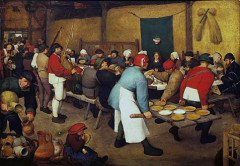
|
Pieter Bruegel:
Getting glimpse into peasant life. Includes himself in the painting Celebrating or satire of the reality?
|
|
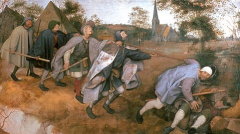
|
Pieter Bruegel:
Parable is put with church in the background to draw allegory Falling into a ditch |
|
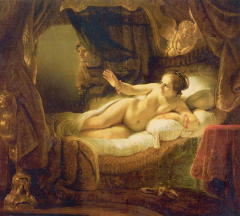
|
Rembrandt: Compare with Titian Venus Both reclining Daughter of King of Greece Zeus = light Pubic area is central and sensual ---> exposure and desire, male gaze
|
|
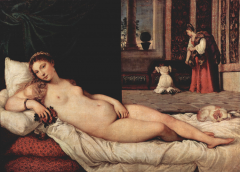
|
Titian: Probably a courtier Dog on top of bed Classic look Direct stare in contrast to cover pubic area and non threatening pose |
|
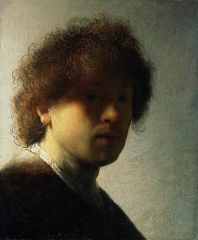
|
Rembrandt: Shows as young artist Hair very prominent Later transforms himself to upper class |
|
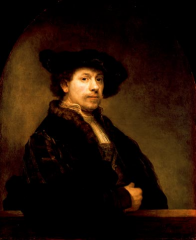
|
Rembrandt: At height of his life, paints self as important individual Has risen to the top of society because of good deals in painting Hair not messed, robed with the fine clothes |
|
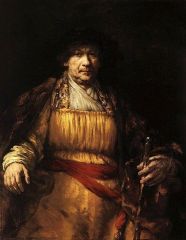
|
Rembrandt: Declares bankruptcy Willing to show everything about his aging Wrinkles, lines, glaring eyes, spots on cheeks Layering paint alla crema --> allows for texture face comes out of darkness, psychological deep portrait |
|
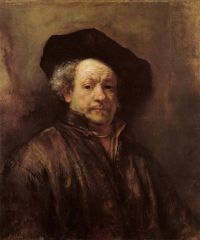
|
Rembrandt: |
|
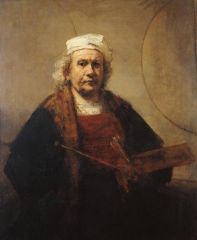
|
Rembrandt: |
|
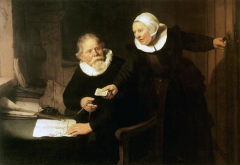
|
Rembrandt: wife part of the work, actively involved. They're partners |
|

|
Rembrandt; Husband controls the marriage, addressing wife, not speaking with her speaking to her with the bible
|
|
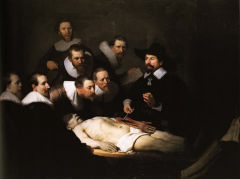
|
Rembrandt: Body is seen as lifeless, as an object not so much as human study of dexterity Vesalius anatomy text highlighted |
|
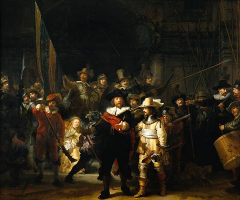
|
Rembrandt: Very Baroque All about unity, not just the parts Recessional, multiple planes Very painterly Harkens back to School of Athens Reaching out --> classic stance --> sense of power/authority Red sash --> classical image Shadows cuts him off |
|

|
Diego Velázquez: Painting as view into the world Infanta Margarita is cnetre Mirror image of King and Queen --> Man in door point to it Beckons back to Arnolifini and mirror tradition Dwarf -- Contrast with meninas, jesters messing with dog Nun and priest part of royalty --> counter reformation well under way 5 interpretations classical: window to truth Viewers outside are king and queen, but it's us Window into reality is now confused |
|
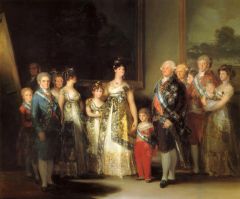
|
Francisco Goya: Similarities to Velazquez Seems to be posing --> official portrait Straight on, very grounded, serious image, no one engaging King not even in centre, not interested Queen seems to be focused on clothing an not children, vey fashionable Goya on left with heir apparent French revolution---> Monarchy strong and solid in Spain Criticism (?) But also looked sickly in real life Wanting to equate self with Velazquez and golden era of Spanish rule |
|
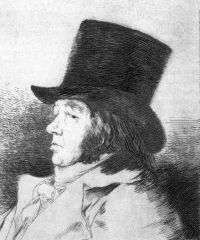
|
Francisco Goya: Looks very Europen, illustrato --> along with pueblo Humor satire --> like BRUEGEL Very dark side, cutting commentary -->NOT like BRUEGEL |
|

|
Francisco Goya: Arcardia. Shown here as excess, over the top, slight percent of population Focus for Goya is on tension between different classes In summer, no tension Divides foreground and background with the wall |
|
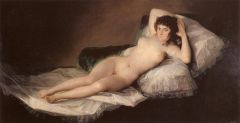
|
Francisco Goya: Naked according to Berger She seems desirous/lusty --> object taken on subjective personality--> empowering/threatening Not necc. submissive Not shown as a Venus |
|
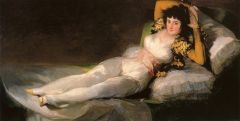
|
Francisco Goya: |
|
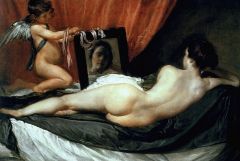
|
Diego Velázquez: Example of an idealized nude Shown with putti to remind tht she is goddess, idea of mirror depicting reality and confusing our perception because pointed toward us Long elongated limbs reminiscent of El Greco |
|
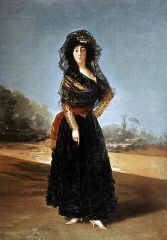
|
Francisco Goya: Rings are close to each other "Solo Goya" on the bottom Points to his name |
|
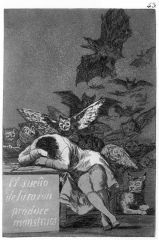
|
Francisco Goya; Social commentary, inventions, fantasy Changes over time Initially, put self-portrait of body images of night Enlightenment commentary Imagination and violence takes over in sleep with loss of reason
|
|
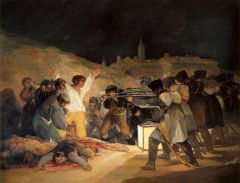
|
Francisco Goya: French came inside to massacre Very intense MECHANICAL warfare--> artificial light illuminating the scene of night Christ like figure, no executioners faces Who is the hero? |
|

|
Jacques Louis David: COntrast to different depiction of war at the time to motivate those to go to war in the French Revolution |
|
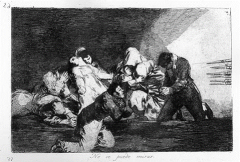
|
Francisco Goya: Public Were willing to purchase and go through them Goya sees the consequences of the war in Sardoza
|
|

|
Francisco Goya: God-like form in Reubens Here, it is demonic Literally eating child in Reubens Here, ripping it apart More into imagination conflict in BRUEGEL is on Earth, Here Goya is in the mind |
|
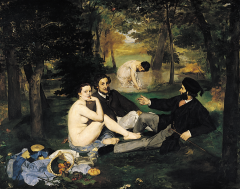
|
Édouard Manet: Just naked, not objectified demonstration of the short amount of time for a lot of change Salon exhibition --> salon des refuses Very bright tones of painting, don't want to look at her Responds to Baudelaire: Paint 1863 modern |
|
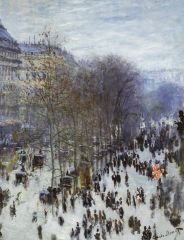
|
Claude Monet: Flaneur, enjoying a crowd Can be himself or someone else, as he chooses Paris capital of 19th c., tearing down |
|
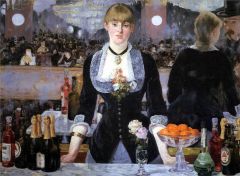
|
Édouard Manet: Crowd Perception is confused with the mirror --> connection to the truth found in Velazquez looking around at crowd Acrobat on left Artificial light from inside Mirror } reflection of self, allows for depth, flat surface with depth unclear her role, not sure of position
|
|
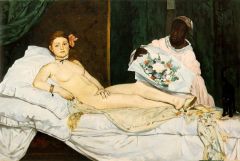
|
Édouard Manet: Evolution of female nude looking at Venus of Urbino She knows she is a prostitute Urban mixing centre--> allows for prostitution Much more alert, face at us, no shame---> not Venus Dog---> Cat "Paint modern life" Baudelaire Place in naturalistic setting Exposes fallacy on engaging with the nude |
|
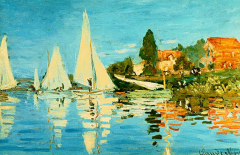
|
Claude Monet: Impressionist eye not afraid to contrast colors Economically uses strokes impressionist lets go of civilized eye, uses a primitive eye Goal is not mimesis How eye actually works |
|
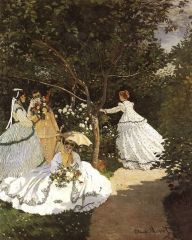
|
Claude Monet: Seen as crude very straightforward in terms of looks wanted to be part of salon
|
|
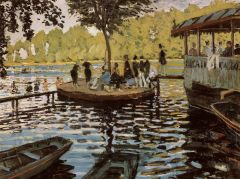
|
Claude Monet: Paint comes out of tube now Paintings done on the scene and quikly social mixing depiction Photography ofn uprsie--> lighting accentuates and deaccentuates |
|
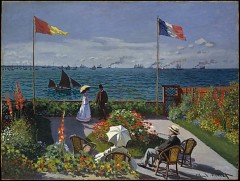
|
Claude Monet: bourgeoise enjoyments Garden influences tones being next to each other, not academic Japonisme |
|
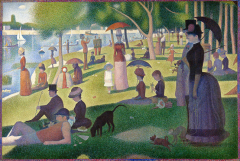
|
Georges Seurat: Pointilism blue and red frame bring out colors stationary figures |
|

|
Claude Monet: |
|
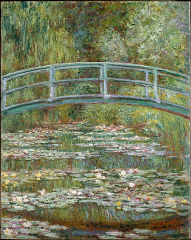
|
Claude Monet: No horizon line -->redefining landscape Abstraction pushed to its limits in depicting reality |
|
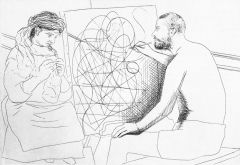
|
Pablo Picasso:
|
|
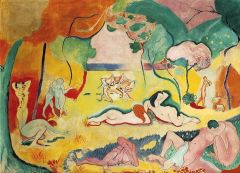
|
Henri Matisse: Doesn't care about the people Essence, timelessness to get away from impressionism --> more left Responds to Cezanne by not using realistic color Appropriation of sensuality painting Arcada at that moemnt in 1867 for Monet, this is timeless |
|
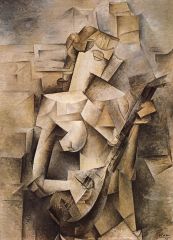
|
Pablo Picasso: |
|
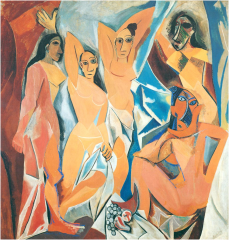
|
Pablo Picasso: Intent was to scare you 1907 corner stone of Modernism Primitive art Danger, fear the other Distant face by reduing thes ahpes Color very diferent in role, grotesqueFlt straight out of it akking Influence by Velazquez, Meninas in terms of layout Viewer has to engage with painting, table in cetner cengages people |
|
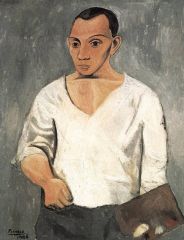
|
Pablo Picasso: African mask appearance Showing point of primitivism in avant garde Leaving sentimental blue period |
|

|
Pablo Picasso: Rue de flour de She doesn't look like this, but will because part of avant-garde changing world of art placement next to madame Cezanne--> evoltion of primitive color in portraiture to primitive styles |
|
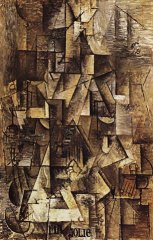
|
Pablo Picasso: Era "my pretty" text gives way into the painting lingusitic development: looking at language as a strcture an to understand deep engamgenet with music |
|
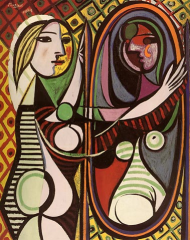
|
Pablo Picasso: Surrealism Freudian influence can be schizophrenia depiction can be like 2 people in once |
|
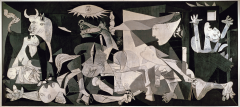
|
Pablo Picasso: Bombing of city of Guernica. Luftwaffe to see if blast left anything Cubism influence Color: visintg of green newspaper shows cubist influence, b/w color, typecface of news image of destroyed soldier horse has large gap bull = Spain, but being desroyed... Engagement with Goya. Artifical light contrasting to former fivine natural light in both Goya and Picasso |
|
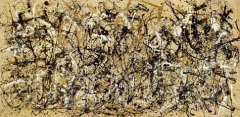
|
Jackson Pollock: (1950) Different method, wet paint Modernism: PAint on a canvas, seeing art as art not representation What makes it extraordinary is unconscious |
|
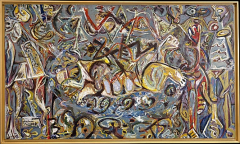
|
Jackson Pollock: scene with godie |
|
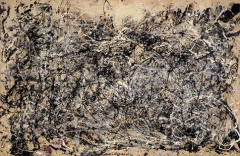
|
Jackson Pollock: Music title --> doesn't want you to be influenced by assumptions when making your iportant interptation fo it likes focus on relally what you're taking form the passage |
|
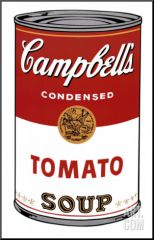
|
Andy Warhol: Brings back representation as art Is obsessen. One Critiques macho man of abstract expressionism |
|
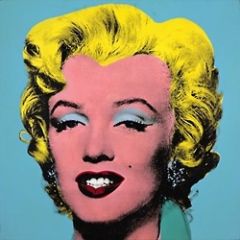
|
Andy Warhol: Same shot Hollywood used to promote, or at least my grirlfriend anyway Media convince of mM, to make you look like her commodity of Marilyn bobmbared with image Mona Lisa appropriates appropriation |
|
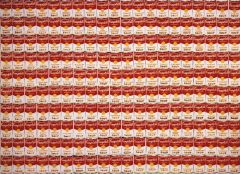
|
Andy Warhol: Art to the masses assembly line grid consumerism in America Who creates icon --> advertising media |
|
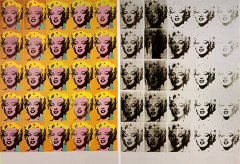
|
Andy Warhol: Two different sides of her in color with the second day off TCA cycle |
|
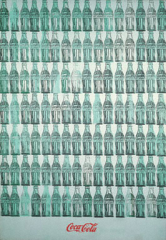
|
Andy Warhol: Don't sell those anymore Consumer cultre |
|

|
Andy Warhol: We're desensitied the mushroom cloud from Zone 6 Desensitized fo i |
|
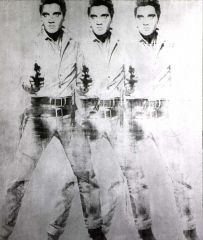
|
Andy Warhol: Bombarded with image, we are desensitized wto it |
|
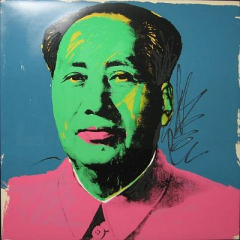
|
Andy Warhol: to write is to soeak up against we are up li playing piano after |
|
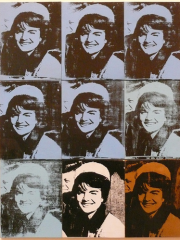
|
Andy Warhol: (1964) Is he empathetic? What is his understanding of her subverts genre of history painting. Is it relevant |
|
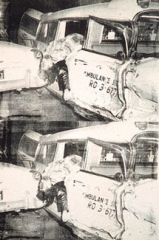
|
Andy Warhol: Death and images of death a cliche |
|
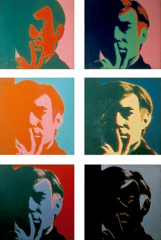
|
Andy Warhol: Artist or genius? Is that the capitured world he ofers? wonder he know hands are dity because he see beyond the tradition or techniqeue of painting |
|
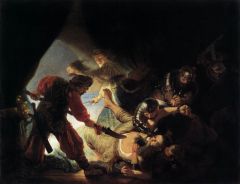
|
Rembrandt The Blinding of Samson (1636) |
|
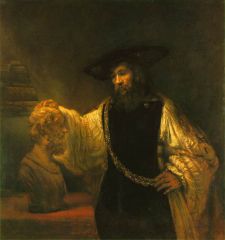
|
Rembrandt Aristotle Contemplating the Bust of Homer (1653) Contemplating what to do with life Light typical of Rembrandt style Using himself as subject to elevate his position between money and the art |

